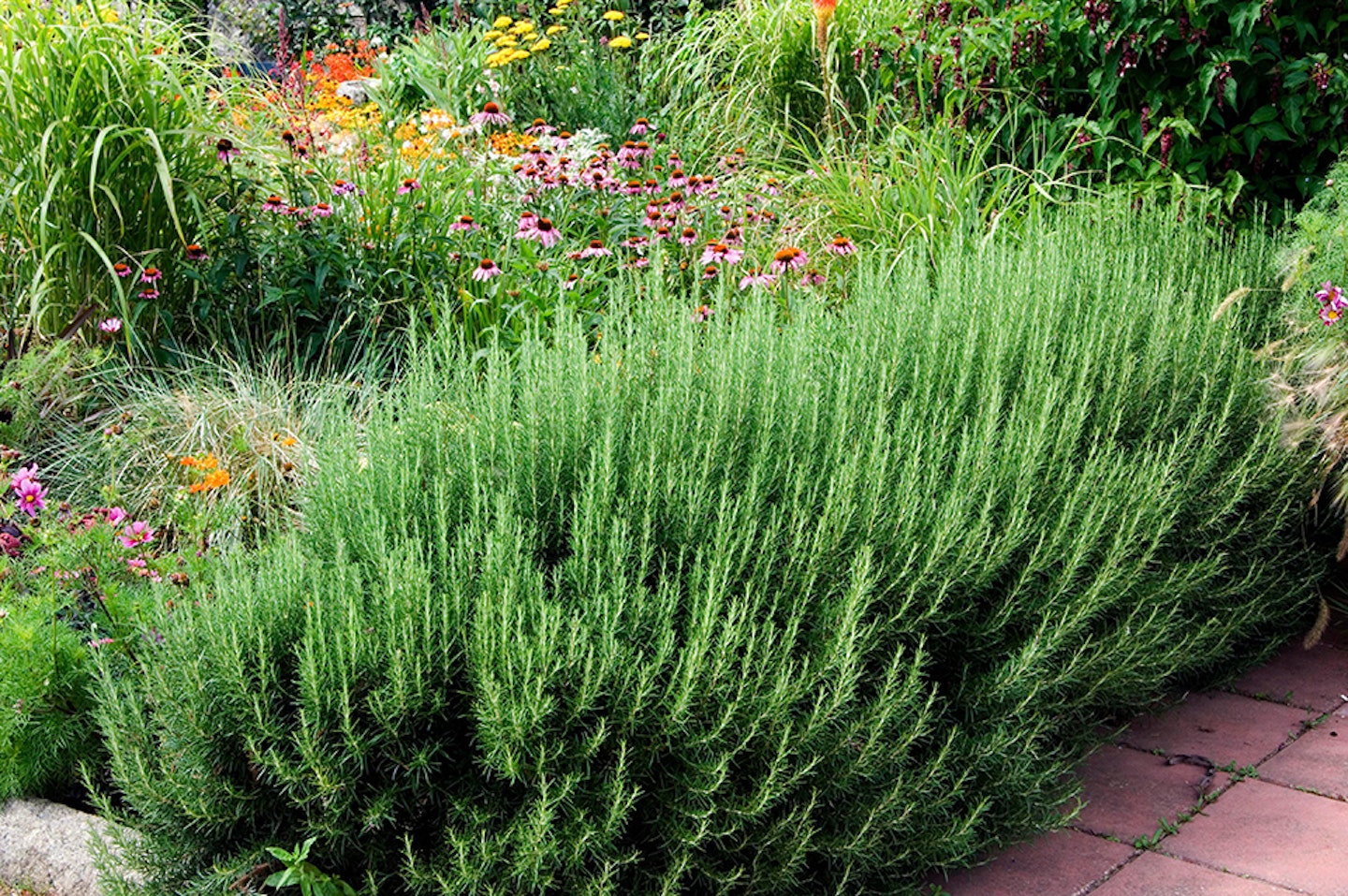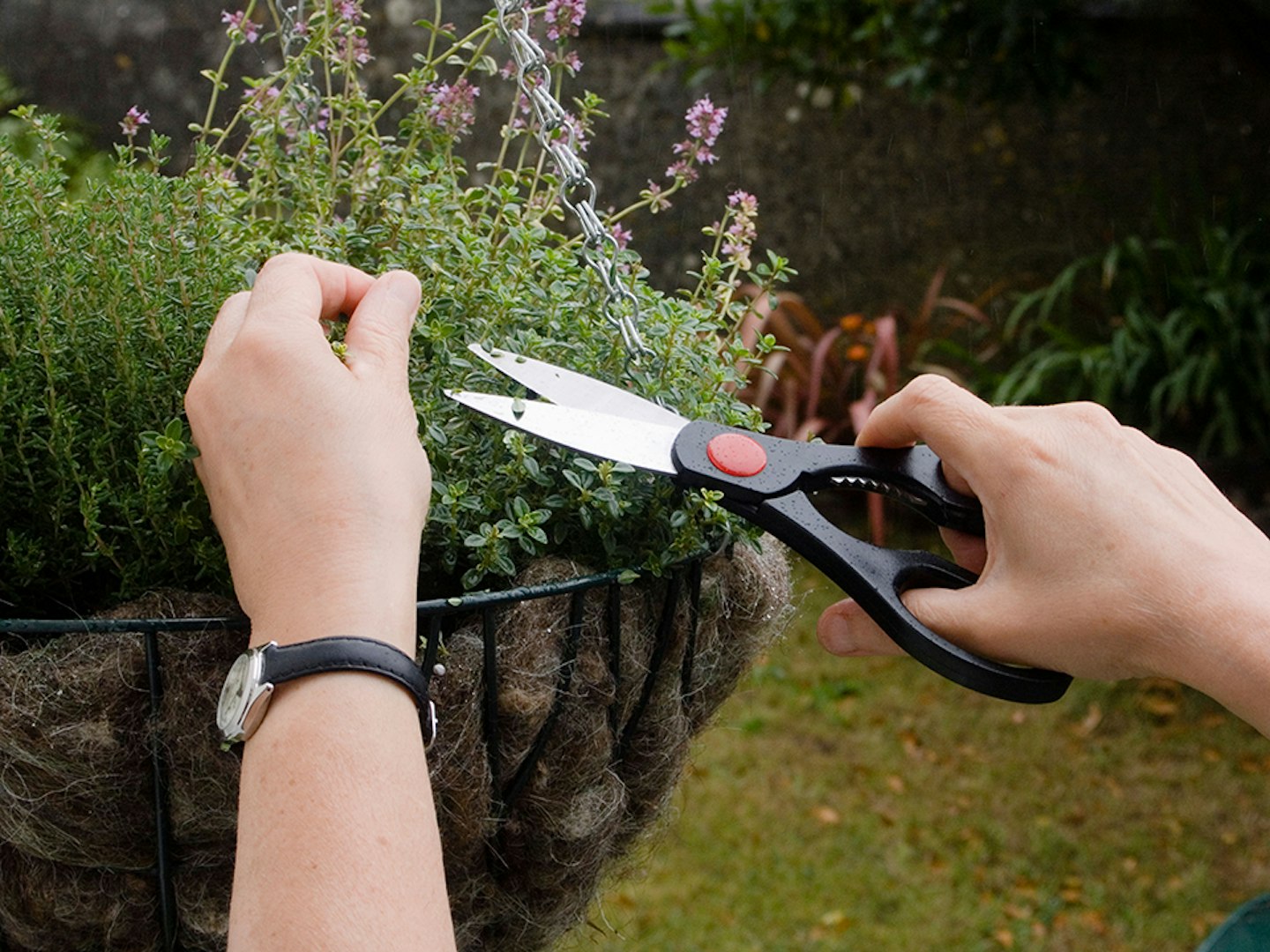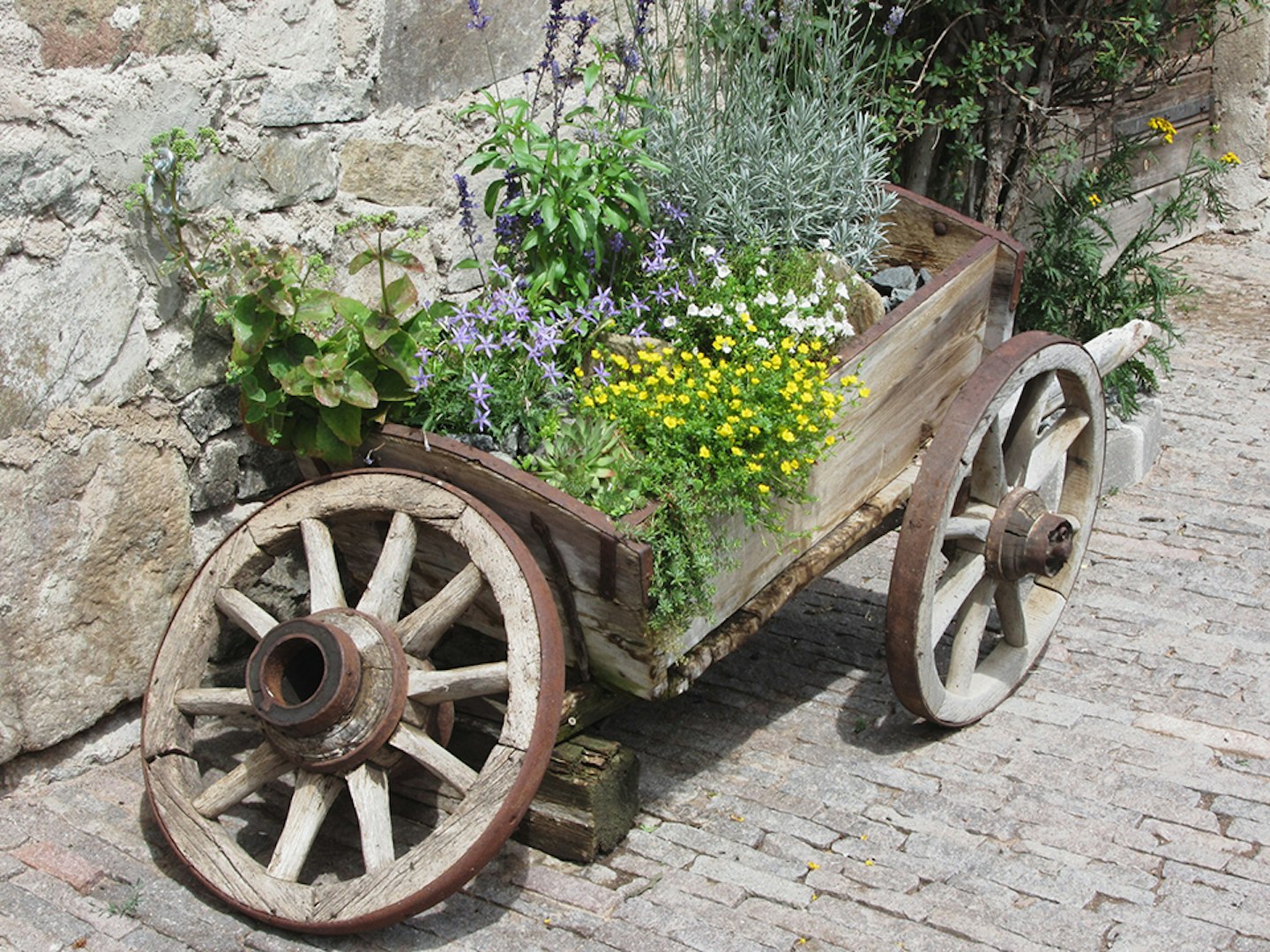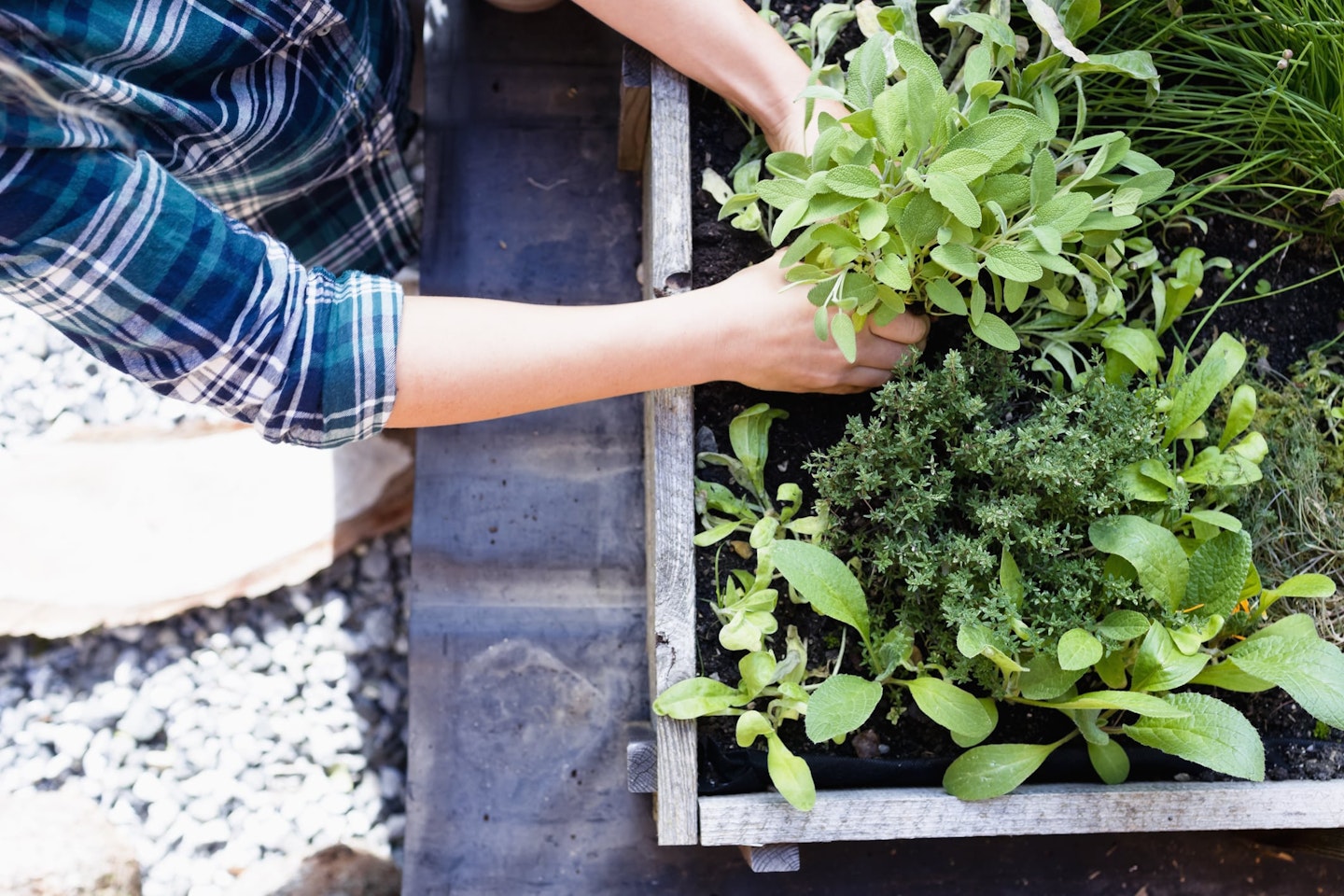Whether you'd like to start a herb garden for recipes in the kitchen, you love gardening or for purely decorative reasons, these aromatic plants are easy to manage and can grow indoors or outdoors. If you do not have the space for an outdoor herb garden, many herbs grow well in containers.
Read on to learn about some creative herb garden ideas and other advice on how to manage your fresh edible plants.
The best herb garden ideas
1. Create a unique centre piece

If you are looking for a kitchen centrepiece then why not make these tea cup planters from A Cultivated Nest. You could also use old bowls, jugs and even mugs.
2. Add a herb shelf indoors

3. Add a herb hedge

Rosemary is a particularly good herb for this. Not only does it smell delicious, but it's a great herb to border patios and flower beds.
4. Create a herb jar garden

Get crafty with this project inspired by Camille Styles by mounting mason jars on a wood panel for a stylish and practical herb garden.
5. Create a DIY herb planter

This faux ladder planter from Ana White will turn your herb patch into a garden feature. You can either purchase one, or you can have a go making one yourself with this B&Q tutorial.
6. Create a tray display

Get creative and create an indoor herb tray garden inspired by Naturalie Craftie Home. Place it on your window sill or on your workspace for easy access.
7. Use a shoe holder

Grow herbs using a shoe holder following Instructables tutorial. You can use this innovative shoe holder planter to grow fresh herbs indoors or outdoors.
8. Create a herb hanging garden

Hanging baskets are a brilliant option for smaller gardens and can be hung over fences and walls, or attached with screws. There's also a huge variety of hanging baskets available, from traditional metal ones to cute quirky ones that you can make yourself out of tin cans or smaller gardening pots.
9. Upcycle old gardening or household items

We love a littleupcycleproject, not only is it good for the environment, but it's an easy (and cheap) way to create something unique that no one else has. We think this wheel barrow herb garden idea is so cleaver. Don't worry if you don't have one, look round your garden shed for other items or in your home, as long as there's no holes in it, it'll be fine.
10. Add some height

Stack up some plant pots with this idea fromFancy Frugal Life. This simple DIY stacked outdoor herb garden will take minimal time for maximum results.
Which herbs can be planted together?
You can plant three or four varieties in each large planter. Specific herbs grow well together, such as these combinations:
• Mediterranean herbs: Sweet basil, rosemary and thyme
• Salad herbs: Chives, rocket and dill
• Mid-eastern herbs: Cilantro, parsley and thyme
Beginners guide to planting a herb garden
Completely new to the world of growing herbs? Then it's best to pick perennial herbs, such as mint, rosemary, thyme and sage, as these won't require huge amounts of TLC, so you won't feel overwhelmed.
If you have the garden space, try growing your herbs in the ground as it requires less maintenance. Pots are great for if you have a very small or no garden at all, however a plant's soil always dries out faster in containers, so you'll just have to make sure you're on top of the watering.
In general though, herbs are super easy to grow. Either sow from seed and follow the instructions on the back of the packet, or you can buy a plant from a garden centre.
How do I make an outdoor herb garden?
1. Pick a location. Find an area that has about six hours of sun a day.
2. Prepare the area for planting. If you are planting in the ground, then start by loosening the soil for better growth. If you are using a planter box or a container, ensure that it has good drainage or holes on the bottom.
3. Add plants to soil. Start by digging each hole to twice the width of the root ball of the herb and give the bedding plants a good amount of room so that they have room to spread out and grow.
4. Water regularly. This one is a given. New plants need lots of water so make sure they get around an inch of water each week throughout the growing season. If you are unsure, water them a bit every day.
Tips for herb planting and care:

• Herbs planted in pots will need to be watered frequently, therefore test the soil each day - if it feels crumbly or dry give them water.
• Herbs require full sun for most of the day so ensure you position the pots or planter somewhere bright and warm for at least six hours a day.
• Pick your herbs regularly. The more you pick the herbs, the bushier and healthier they will grow.
• Potted herbs can be grown as part of an indoor herb garden in winter on south-facing window sills. Think of herbs such as chives, parsley, oregano and mint.
• Some herbs are best grown from seeds, such as basil, chives, parsley and thyme. However you can re-pot supermarket potted herbs.
• Start sowing herbs in spring under cover, and then plant up when the soil warms up.
• One square metre is enough for 10 herb plants.
What are the best growing conditions for herbs?
Herbs will grow in most soils but they require a lot of sun. Some herbs, such as parsley, mint and chervil, will tolerate light shade in summer.
Herb gardens tend to be able to tolerate drought but in hot, dry spells a deep watering will make sure that the plants stay healthy.
What are the types of herbs you can grow at home?
Some common herbs to grow and home and cook with are basil, chives, fennel, horseradish, marjoram, mint, parsley, rosemary, sage and thyme.
What herbs grow all year round?
Perennial herbs are easy to grow and last throughout the year. Herbs such as mint, rosemary, sage, thyme, chives and oregano.
